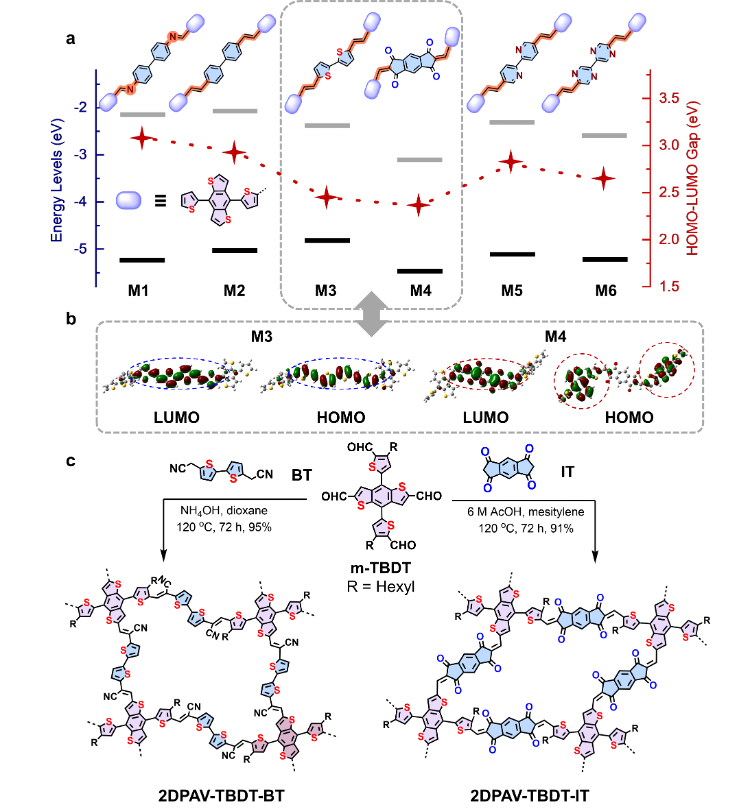Recently, the research group led by Assistant Professor Mingchao Wang from the School of Advanced Materials Shenzhen Graduate School (SAM), in collaboration with the Max Planck Institute for Polymer Research in Germany, Dresden University of Technology, and Sofia University in Bulgaria, successfully developed a donor-acceptor-type two-dimensional poly(arylene vinylene) (2D PAV) material with a square lattice. This material exhibits electron-dominated transport properties and enables highly efficient detection of sulfur dioxide (SO2) at room temperature, with a detection limit as low as approximately 0.1 ppb. The research findings were published in the international academic journal Angewandte Chemie International Edition under the title “A Donor-Acceptor-Type Two-Dimensional Poly(arylene vinylene) for Efficient Electron Transport and Sensitive Chemiresistors.” .

Figure 1. Publication interface
Two-dimensional conjugated polymers and their layered two-dimensional conjugated covalent organic frameworks (such as 2D PAV) have shown immense potential as polymer semiconductor materials in recent years, with broad application prospects in optoelectronic devices and photocatalysis. However, achieving a narrow optical bandgap and efficient electron transport remains a critical challenge for enhancing the performance of such materials in devices.
This study successfully synthesized a novel donor-acceptor-type 2D PAV material through two-dimensional polycondensation. The material’s donor unit is thiophene-benzodithiophene, and the acceptor unit is s-indacene-1,3,5,7(2H,6H)-tetraone. Thanks to the intralayer donor-acceptor synergy, the material’s optical bandgap is reduced to 1.15 eV, lower than that of previously reported 2D conjugated polymer frameworks. Density functional theory calculations revealed the material’s unique electron-dominated transport characteristics: the highly dispersed conduction band minimum results in an electron effective mass that is only half that of holes.

Figure 2. Material design and synthesis strategy
Terahertz spectroscopy measurements indicated that the material’s intrinsic carrier mobility reaches 26 cm2V⁻1s⁻1 at room temperature. Leveraging its electron-deficient properties (enabling efficient capture of electrons from harmful gases) and high-mobility electron-dominated transport, the researchers developed a chemiresistive electronic sensor based on this material, capable of detecting SO2 at room temperature with a detection limit as low as 0.088 ppb. This breakthrough provides a new technical solution for monitoring atmospheric pollutants.
Assistant Professor Mingchao Wang from the SAM, along with Professor Xinliang Feng and Professor Gianaurelio Cuniberti from Dresden University of Technology, served as co-corresponding authors of the paper.
Link to the paper: https://doi.org/10.1002/anie.202504302.
